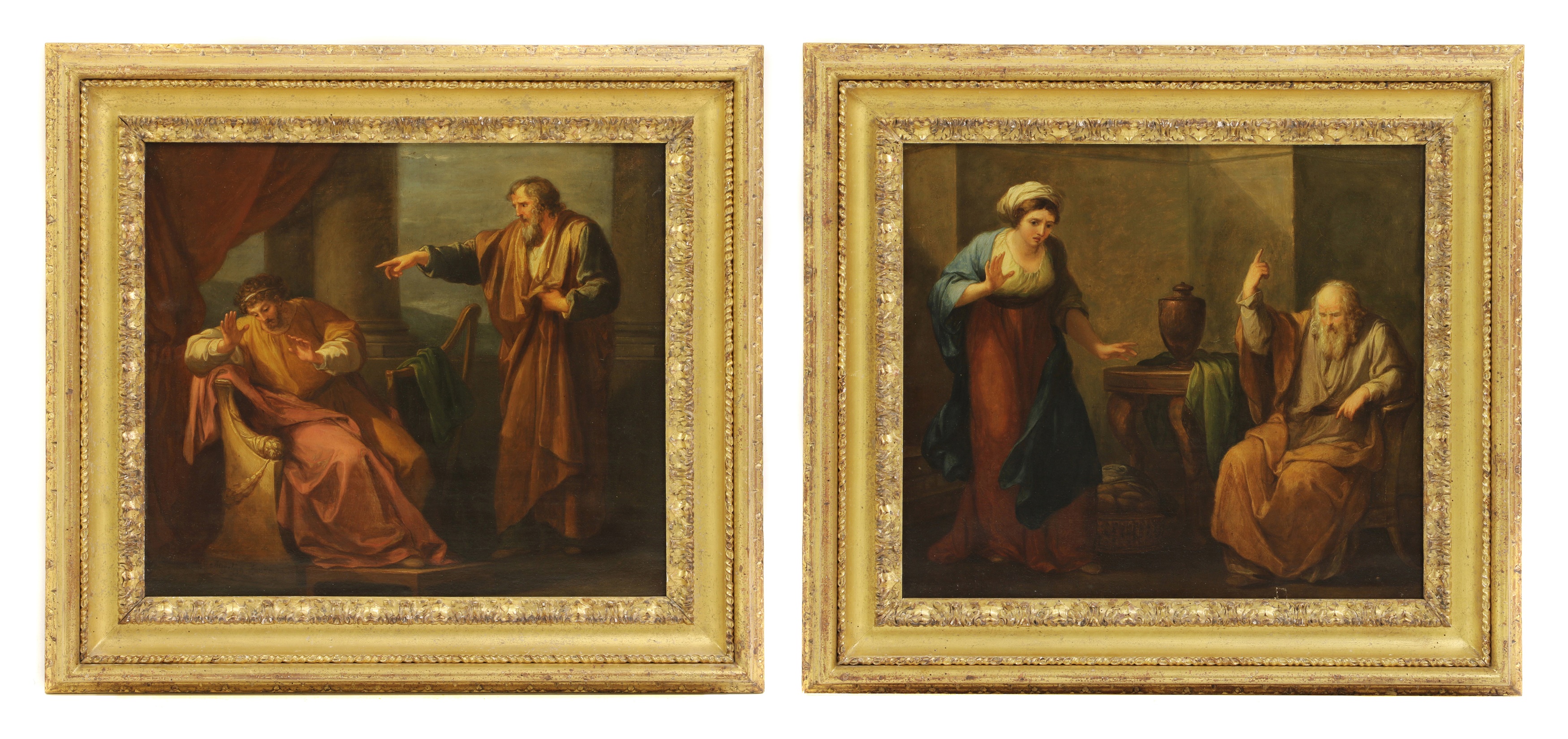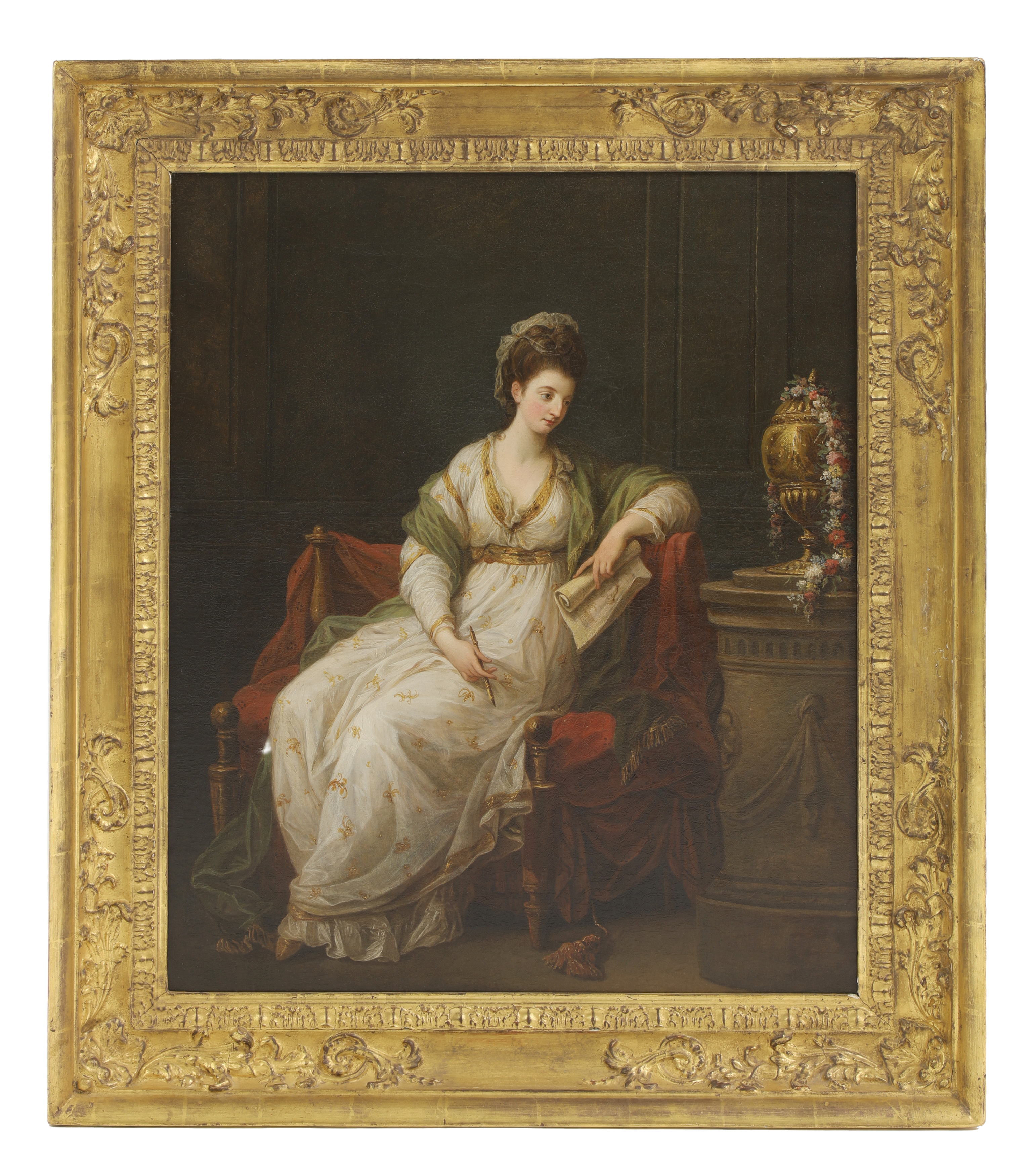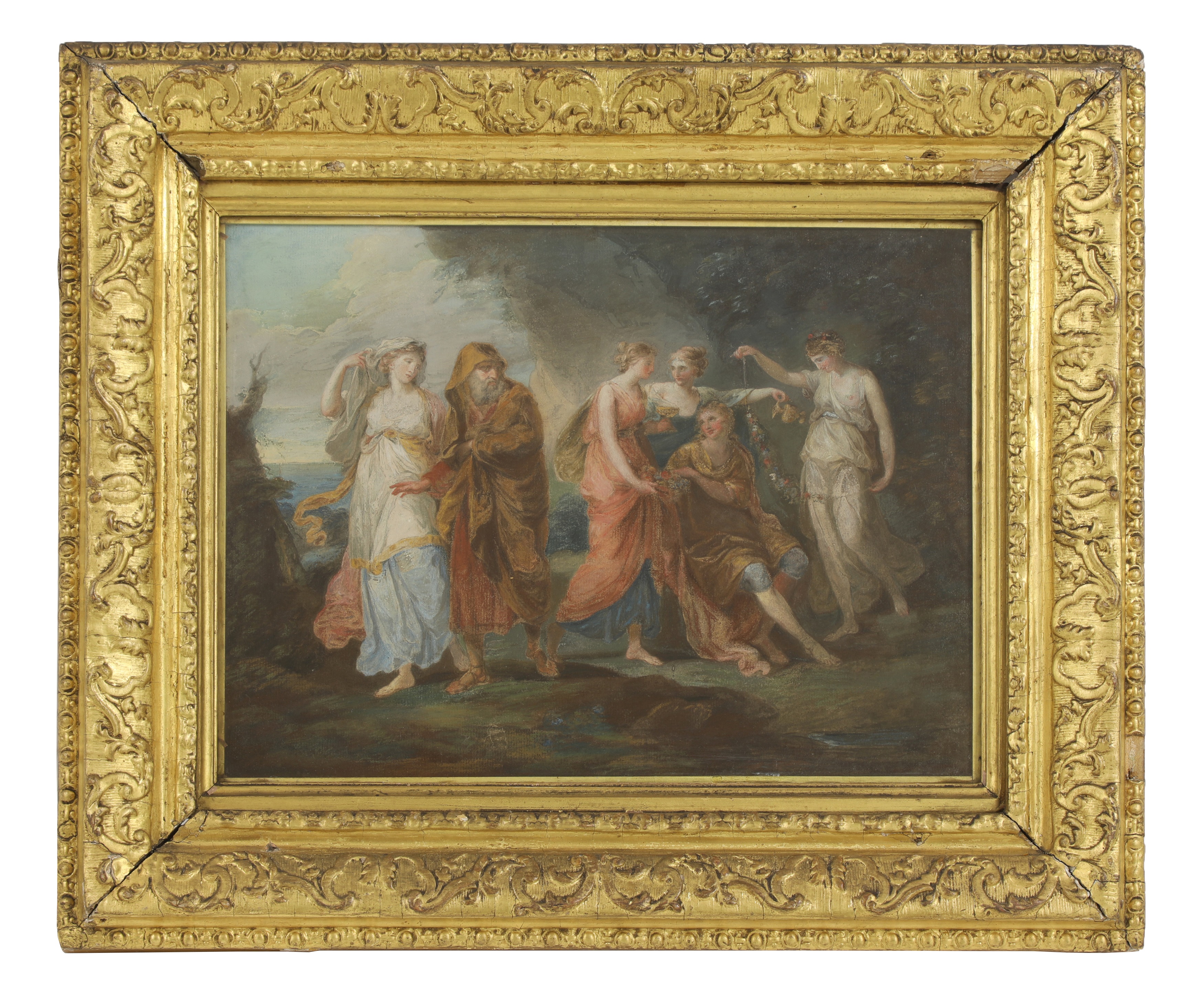She created more than 1,000 mythological, historical, religious and allegorical paintings as well as numerous portraits, wonderful drawings and about 40 etchings by her own hand, which are sought-after by collectors throughout Europe and the USA, and increasingly also in Australia, East Asia or South Africa. Most of the artist's works, however, are still to be found in the country houses and city mansions of Great Britain, especially in London, where the young artist rose to fame.
One of today’s collections in London, in which numerous works by the artist had been lovingly assembled over the past thirty years, is now parting with some of the paintings. This opens up a good opportunity for the growing circle of Kauffman enthusiasts to expand their collections.
Angelica Kauffman lived in London from 1766 to 1781, and it was there that she first flourished as an artist. She injected new ideas into British art and with her scenes of medieval Britons played a role in the revival of history painting there as well as being an active contributor to the Homer and Shakespeare renaissance.
Kauffman benefited primarily from the patronage of her own sex during her early days in London. Her first portrait clients were young, modern women from the upper echelons of society and included Anne Seymour Conway, later Damer, who was to become a sculptress in her own right. Subsequently the young artist developed a new type of portrait depicting her female clients as creative personalities, as in the portrait offered here of Louisa Henrietta Campbell. Kauffman shows her as a draughtswoman with a drawing pencil and a drawing in her hand.
Image-making by catering to celebrities was a shrewd strategy even in those days, and Kauffman was able to raise her own social status considerably simply by surrounding herself with famous people. She won the support of emperors, queens and nobles all over Europe, among them Empress Catherine the Great of Russia or Joseph II, Emperor of Austria. Her first patrons in London included influential members of the royal family such as the Dowager Princess Augusta, mother of George III, and her art-loving daughter-in-law, Queen Charlotte, who assured Kauffman of a successful launch in London. This royal patronage led to some large-format portraits of female rulers. Having one’s likeness painted by this talented young artist was suddenly all the rage.
Her most important goal, however, was to gain recognition as a history painter, so it was as a history painter that this founding member of the Royal Academy of Arts presented herself at its annual exhibitions. Kauffman contributed some eighty paintings to its annual shows between 1769–97, and while at first these were all history paintings, she later added literary and allegorical subjects and portraits.
George Bowles of Wanstead was her best customer in England and soon owned one of the largest Kauffman collection on the British Isles. Two from his collection are offered here, the biblical scenes David and Nathan and Ahlijah and Abijah, which belonged to the Bowles collection from 1791 and therefore have a correspondingly famous provenance. Two scenes of the set of four now belonging to the Bündner Kunstmuseum, in Chur, Switzerland.
In London, Kauffman also began to focus on developing a new subgenre of single-figure history or allegory in small-formats, such as the series offered here. The two pairs are painted for the publisher Jane Matthew in London, while Angelica was living in Rome. The single figures are symbols of abstract concepts and are characterised only by a few attributes. The counterpart to the virtue of modesty is the vice of vanity. The muse of Memory is counterpart to the muse of Meditation. Matthew’s investment in buying the little images paid for itself quickly, as she had them printed as stipple engravings. She quickly made a profit as the demand for Kauffman’s works was so overwhelming that, according to the Danish ambassador Gottlob Friedrich Ernst Graf Schönborn, the saying “the whole world is angelica mad” was on everyone’s lips.




